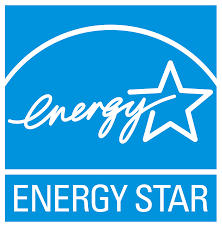Energy efficiency is more important to consumers now than ever before, and they pay more attention to efficiency ratings for a range of devices. Thanks to the ENERGY STAR program, part of the US Department of Energy, consumers have an easy way to identify appliances that have passed the requirements for lower energy consumption and eco-friendly performance.
Air conditioners use more electricity than almost any other household appliance, and that makes understanding their efficiency ratings a key part of lowering monthly bills and having an energy-saving household. We know all about the importance of AC efficiency in Minneapolis, MN, and we’re going to take a closer look at efficiency ratings in this post. When it comes to choosing a new AC for installation, always work with professionals who can help you find the system that has the right combination of efficiency, size, and performance for your household.
SEER and EER
The two basic ratings for air conditioner energy efficiency are SEER (Seasonal Energy Efficiency Ratio) and EER (Energy Efficiency Ratio). Both measurements are ratios of the amount of cooling an AC unit delivers (in BTUs) to the amount of electricity used (in watt-hours). The higher the ratio, the more efficient the unit.
EER is done as a single test with set temperature and humidity. Think of it as a snapshot of the air conditioner’s efficiency performance under standard conditions.
SEER is done as a series of tests with a range of temperatures and humidity levels meant to duplicate a full summer season of work. SEER therefore provides a better overall sense of the unit’s performance.
SEER and EER are usually listed together, and SEER is always higher. For example, a typical ENERGY STAR central air conditioner may have 14 SEER/11 EER.
The SEER2 Change
Now we have to complicate the situation a bit, because Seasonal Energy Efficiency Ratio 2 (SEER2) is replacing the standard SEER we just explained above. SEER2 is calculated similarly to SEER, with the higher rating meaning better energy efficiency. However, SEER2 takes into account several other factors that weren’t part of SEER, such as external static pressure, to make the rating a more accurate reflection of real-world conditions. (Yes, there’s also EER2.)
The new testing procedure for SEER2 results in a different scale of ratings. For example, 14 SEER is now pushed down to the equivalent of 13 SEER under the SEER2 system, making older 14 SEER air conditioners no longer eligible for the ENERGY STAR label. The ENERGY STAR program requires that air conditioning systems must have 14.5 SEER2 or higher.
The Choice
Here’s something key to remember: high efficiency isn’t an automatic guarantee you’ll save money with a new AC. A unit can be efficient, but still run too often or start and stop too often and end up wasting energy. It’s important when you’re looking for a new air conditioning system to balance several factors. This is why it’s vital to have professionals like ours working with you. We’ll help you find the ideal cooling system for your house.
Contact Residential Heating and Air Conditioning and “Feel the Difference”!

